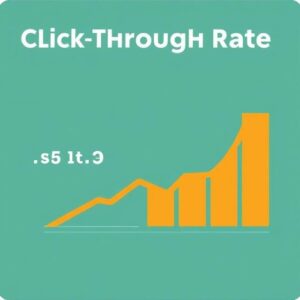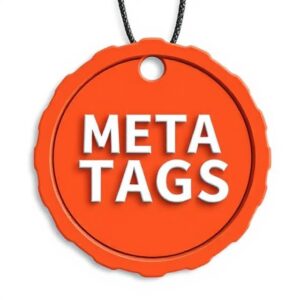
Lets bust the myth about Meta description, Meta descriptions, Click Through Rate, Meta Tags, Search Engines, Meta Title, and the best, Keyword for Google Ranking.
What Are Meta Descriptions?
Meta descriptions are concise, HTML attributes that provide a brief summary of a webpage’s content. Therefore typically only so many characters long. Whereas these snippets are designed to inform both users and search engines about the page’s topic. As an essential component of web design and SEO, a meta description aimed to enhance the click through rate (CTR). Therefore from search engine results pages (SERPs). By compelling potential visitors to engage with the link.
Understanding Meta Descriptions: Myths, Facts, and Their Impact on SEO
Therefore a meta description in web design serves to capture the essence of a page’s content. Without revealing all its details. Unlike title tags, which primarily focus on identifying the page for search engines and users. A meta description plays a unique role by providing a more descriptive summary that can influence user decisions. When a web user conducts a search. Search engines utilize these descriptions to display relevant information regarding the website. Often highlighting them in bold if they match the user’s query.
While meta descriptions do not directly impact a page’s Google ranking. They are crucial for attracting clicks. Thereby indirectly influencing visibility and performance within search results. A well crafted meta description can significantly boost a page’s CTR. Which is one of the factors that may lead to improved rankings over time. It is important to distinguish between meta descriptions and other meta tags. As each serves a distinct function in the web design and optimization. By understanding the importance of meta descriptions and their role within SEO. Therefore web designers can enhance their website’s performance.
Meta Descriptions

The Relationship Between Meta Descriptions and Click Through Rates
Meta descriptions serve as a crucial element in search engine optimization (SEO). Particularly in their ability to impact click through rates. These succinct summaries, generally ranging from 150 to 160 characters. Provide potential visitors with insight into the content of a web page. A well crafted meta description tantalizes a user. Prompting them to click on a link over others. Research shows that pages with compelling and relevant meta descriptions. Enjoy significantly higher CTR. Compared to those that do not use this in the web design.
One pivotal factor to consider is the importance of aligning meta descriptions with user intent. Search engines like Google often pull and display these snippets in their search results. Thus creating an immediate first impression for potential visitors. If the description resonates with what users are searching for. They are more likely to choose that link. In fact, studies indicate that pages with descriptive and action oriented language in their meta descriptions. Can see a CTR improvement of up to 20%. This statistic underscores the importance of having personalized. Engaging descriptions that not only reflect the webpage’s content but also appeal to users’ curiosity.
Furthermore, A/B testing has become a common practice for web designers. Aiming to discover what kinds of meta descriptions optimize CTR. Many businesses have successfully observed that testing different phrases. Calls to action, or even emotional appeals leads to improved performance in user engagement. A meta description that clearly states what the user can expect can be a deciding factor. That influences their choice for a click. In conclusion, the relationship between meta descriptions and click through rates is profound. Directly influencing a website’s performance in terms of both traffic and visibility in search engine results.
Click Through Rate

Debunking Myths: Meta Tags and Search Rankings
In the realm of search engine optimization, web design and SEO. Therefore the role of meta tags, particularly meta descriptions. Is clouded by myths. A misconception is that a meta description directly influence Google ranking. This assertion is misleading. Google’s algorithms prioritize content relevance and quality over the meta description content itself. Consequently, while a well crafted meta description will not improve your rankings directly. It plays a role in enhancing user engagement and click through rate.
Additionally another common myth suggests that writing unique meta descriptions is unnecessary since they hold no ranking power. In reality. A unique meta description serve a significant purpose. Because they can greatly improve click through rate (CTR). A compelling description informs users about the nature of the content. Encouraging them to click on the link. This increase in CTR can be beneficial in the long run. As search engines interpret a higher engagement level as content quality. Influencing overall perceptions of your website without directly impacting its ranking.
Additionally, most believe that the length of a meta description should always be over 160 characters to capture attention. However, the optimal length is more about capturing essential information concisely. Rather than strictly adhering to numeric values. Search engines like Google often truncate longer descriptions. Which may lead to a loss of valuable information, ultimately lowering click through rate. Thus, crafting concise, informative, and engaging descriptions is paramount.
Ultimately, understanding the function of meta descriptions. Their role in the web design and SEO landscape. Is vital for any digital marketing strategy. While they may not be a direct ranking factor. Their ability to enhance user engagement and improve the click through rate. Makes them a critical component of web design and SEO.
Meta Tags

The Role of Keyword Meta Tags in Web Design
Keywords play a role in optimizing meta tags. In meta titles and descriptions, which are components of search engine optimization (SEO). Therefore these elements serve as the first interaction point between a user and a website. Whereas in the search engine results pages (SERPs). When built correct. Meta descriptions can enhance click through rates (CTR). Whereby attracting user attention and encouraging them to engage.
Therefore targeting the right keywords within these meta tags is essential for improving a website’s ranking. In search engines like Google. Therefore this process involves a strategic approach. To select keywords that align with user intent based on search queries. The incorporation of relevant keywords not only aids in matching search phrases but also provides context to search engines. Thereby facilitating better SERP positioning. A well optimized meta description should include primary keywords near the beginning. Allowing search engines to understand the relevance of the content quickly.
Meta Tags in Web Design and SEO
However, there exists a common misconception regarding the overuse of keywords. Often referred to as “keyword stuffing.” This practice. Which involves excessively repeating keywords in an attempt to manipulate rankings. Can lead to bad effects. Search engines have evolved to prioritize user experience, and as such. They may penalize websites that attempt to deceive through over optimization. Instead, focusing on providing clear. Concise, and engaging descriptions that naturally incorporate keywords is the optimal strategy.
It is also worth noting that while keywords are important. The true effectiveness of a meta description lies in its ability to provide a compelling summary of the content. A well written meta description during the web design. Addressing the needs of users and includes relevant keywords. Will improve Google ranking but also enhance user engagement and satisfaction.
Search Engines

Keyword meta tags were once considered a powerful tool in the realm of search engines, optimization (SEO). In the early days of SEO and web design. Webmasters utilized these tags to indicate the primary keywords associated with their web content. However, the misuse of keyword meta tags for spamming purposes. Resulted in their diminishing significance within search engine algorithms. As a consequence. Search engines like Google have moved away from keyword meta tags. As a ranking factor due to the rampant manipulation of this feature.
Exploring the Myth of Keyword Meta Tags
In the late 1990s and early 2000s. The keyword meta tag allowed web designers to convey their customers site’s focus to search engines crawlers. Supposedly enhancing their visibility in search results. However, this method was easily abused. Because many web designers covered up their meta tags with irrelevant or unrelated keywords. Tricking search engines into providing high click through rates for their pages. This practice led to a decline in the accuracy of search results. Prompting shifts in search engine strategies.
Consequently, web design, SEO practices no longer prioritize the keyword meta tag. As a viable tool for improving a site’s Google ranking. Instead, search engines have increasingly focused on the overall quality of content. User engagement, and relevance of the material presented. Factors such as backlinks. Content structure, and user experience have taken precedence over meta tags. Current digital marketing strategies now emphasize the importance of a well crafted meta description. Which plays a role in attracting users and directly influencing click through rates.
It is crucial for web design, SEO professionals to adapt their strategies. Focusing on content relevance and user experience rather than outdated keyword meta tags. Will lead to better results and align with the search engines algorithms.
Meta Title

Unified User Experience: Meta Title Beyond SEO
Meta tags, particularly a meta title and title tags. Therefore serve vital functions that extend beyond mere web design and SEO. Because these elements are fundamental components of web design. That directly influence user experience. A thoughtfully crafted meta title and meta description offers a succinct and accurate summary of the page’s content. Therefore providing potential visitors with insight into what they can expect. This upfront clarity contributes to a more informed decision making process for users when navigating search results.
In the competitive landscape of digital content. Whereas a compelling meta title can significantly enhance the click through rate (CTR). When users can quickly identify relevant and appealing information from search engine results. Therefore they are more likely to click through to the website. Thus, the effectiveness of a good meta description while doing the web design. Therefore impacts not only the first stage of user interaction but also sets the tone. Whereas for their overall experience on the website. Because a unified user experience that begins with well crafted meta description. Therefore can lead to a deeper engagement and higher satisfaction levels among visitors.
Furthermore, user experience (UX) strongly correlates with SEO performance. When users are satisfied with their experience. Characterized by clarity, relevance, and value. Therefore they tend to stay longer on a site and engage more deeply with its content. This behavior signals to search engines that the page provides meaningful value. Indirectly improving its Google ranking. Therefore, while meta title and meta descriptions are essential for capturing user attention. Therefore by considering the user experience in the context of meta tags. Hence the best webmasters doing the web design can greatly enhance their site’s appeal.
Title Tag

Updating Title Tag: What Happens?
Updating the title tag is a crucial aspect of Google ranking that often goes overlooked. Meta description and title tag. Play a significant role in influencing click through rates and, consequently, overall traffic to a website. When you update these tags in your web design. The immediate effects may not always be evident, but they can have lasting implications. On your site’s performance in search engine results.
First, it is essential to understand that search engines like Google periodically crawl websites. To assess their content and relevance based on various ranking factors. When you update your meta description and title tag. It signals to search engines that changes have been made. Which can lead to a reevaluation of the site’s relevance in relation to targeted keywords. A more compelling meta description. Can improve visibility and attractiveness in search results. Thus increasing the likelihood of users clicking through to your website.
Moreover, the updated title tag can help improve your site’s positioning in search engine rankings. While a meta description does not directly influence a site’s Google ranking. They indirectly affect it by enhancing user engagement. A good meta description encourages users to click on the link rather than competing search results. Therefore which can signal to search engines that your content is valuable and relevant. This can lead to better rankings over time as search algorithms typically reward high engagement metrics.
To effectively update your title tag, consider following web design best practices such as ensuring each meta description is unique. Clearly outlines the content of the page, and is under 160 characters. Engaging language can also draw users in. Improving your click through rate. Monitoring performance metrics. Therefore helps you assess the impact.
Keyword

Best keyword for Writing Effective Meta Description
In web design. Crafting effective meta description is crucial for optimizing a website’s visibility and enhancing its click through rate. Therefore a well written meta description with the best keyword. Whereas not only serves as a summary of the websites. Content but also entices users to engage with the link. Here are some best practices for writing effective meta description.
The ideal length for a meta description should be between 150 to 160 characters. This length ensures that the entire description is fully displayed in the search results without being truncated. Concise descriptions that convey essential information tend to perform better in terms of google ranking. This is important while doing the web design. Aim to include your focus keyword or a relevant synonym. Within the first 100 characters. As this can significantly impact click through rates.
Utilize action oriented keyword language to encourage users to take the next step. Whether that’s reading the article or visiting your website. Phrases such as “discover,” “learn,” or “find out” can guide readers toward the desired action. Additionally, incorporating a unique selling proposition (USP) can distinguish your content from competitors. Making it more appealing to potential visitors.
Avoid common pitfalls such as keyword stuffing or creating vague descriptions. While including the keyword is essential for optimization in web design. Overstuffing can lead to penalization by search engines. Instead, focus on writing naturally and ensuring that the description remains relevant to the content it represents. Furthermore, ensure that every page on your website has a unique meta description that accurately reflects the content. By adhering to these best practices, you can create effective meta descriptions that improve your website content’s visibility. Enhance click through rates, and positively influence your site’s overall SEO.
Google Ranking

A meta description plays a pivotal role for web design in the realm of Search Engine Optimization (SEO) and Google Ranking. They serve as a concise summary of the content on a webpage. Influencing both user engagement and overall search rankings. Understanding the significance of these brief. Yet impactful snippets. When doing web design is essential for any effective SEO strategy. They not only provide potential visitors. With a preview of what to expect but also contribute to improved click through rates (CTR). When crafted thoughtfully, a well optimized meta description. Captures the attention of users and entice them to click. Thereby driving traffic to the website.
Moreover, meta descriptions are integral to enhancing Google ranking. While they are not a direct ranking factor. An engaging meta description while doing the web design can indirectly affect rankings through increased CTR. When more users click on a link due to an appealing meta description. It signals to search engines that the content is valuable. Which can ultimately improve its position in search results. Therefore, a clear understanding of how to create an effective meta description while doing the web design. Is paramount for users seeking to optimize their sites for better visibility.
A meta description also serves as an opportunity to include relevant keywords for Google Ranking. Including a focus keyword in the meta description can help in aligning with users’ search intent. Making it easier for them to find the information they are seeking. However, it is crucial to strike a balance between keywords and maintaining natural readability. Ensuring that the descriptions are both informative and inviting. So so important in web design.
In conclusion, from enhancing user engagement to supporting overall SEO efforts. The importance of a meta description cannot be overstated.
Unique Selling Proposition

In today’s saturated market, offering a good product isn’t enough. Consumers are bombarded with choices every day, and brands must find a way to cut through the noise. This is where a Unique Selling Proposition (USP) becomes essential in web design.
Unique Selling Proposition: Stand Out or Step Aside
A Unique Selling Proposition with a great meta description is a clear statement that defines what makes what your offer different and better than your competitors. It zeroes in on a specific benefit that matters to your target audience, answering the critical consumer question. “Why should I choose you?”
Whether it’s superior quality, exceptional service, innovative features, or unbeatable value. A well defined USP highlights what your brand brings to the table that others don’t. It gives potential customers a compelling reason to choose you for web design, and remain loyal.
Take brands like Apple, FedEx, or Domino’s Pizza. Therefore each carved out a space in the market by consistently delivering on a Unique Selling Proposition. Apple focuses on elegant, user friendly innovation. FedEx built its reputation on guaranteed overnight delivery. Domino’s once promised hot pizza in 30 minutes or less. These messages are simple, specific, and sticky.
Why Your Unique Selling Proposition and Meta Description Matters
Clarity: It helps focus your messaging and marketing strategy.
Differentiation: It sets you apart in a crowded field.
Customer Alignment: It resonates with your audience’s needs and values.
Brand Identity: It reinforces your brand’s voice and promise.
Creating a strong Unique Selling Proposition requires knowing your audience. It’s not just about being different. Because it’s about being different in a way that matters to your customers. For more great info on the subject. Read our Web Design Okc Blog.
Writing a Meta Description

Write a Compelling Meta Description
Meta tags are essential HTML elements that provide metadata about the web design of the site. Therefore helping search engines and users understand its content. Among these, the title tag and meta description. Play critical roles in improving a website’s visibility and click through rates in search engine results pages (SERPs). This post explores these elements and offers tips to writing a meta description, for SEO through web design.
What Are Meta Tags?
Meta tags are snippets of code in the <head> section of an HTML document that describe aspects of the webpage, such as its content, author, or character encoding. When doing web design. They don’t appear on the page itself but are crucial for search engines and browsers. The most important meta tags for SEO include the title tag and the meta description.
The Title Tag
The title tag defines the title of a webpage and appears in the browser tab, SERPs, and social media shares. It’s a key ranking factor for SEO. Therefore it is useful writing a meta description. Whereas search engines use it to understand the page’s topic.
-
Best Practices:
-
Keep it under 60 characters to avoid truncation in SERPs.
-
Include primary keywords relevant to the page’s content.
-
Make it unique for each page to avoid duplicate content issues.
-
Ensure it’s descriptive and compelling to attract clicks.
-
Example:
<title>Best Organic Coffee Beans | Fair Trade Coffee</title>The Meta Description

The meta description is a brief summary of a webpage’s content, typically displayed below the title tag in SERPs. While not a direct ranking factor. Whereas it influences click through rates by enticing users to visit the page.
-
Characteristics:
-
Limited to 160 characters (including spaces) to avoid truncation.
-
Should be engaging, relevant, and reflective of the page’s content.
-
Often includes a call-to-action (e.g., “Learn more,” “Shop now”).
-
Example:
<meta name="description" content="Discover the best organic coffee beans. Fair trade, sustainably sourced. Shop now for premium quality!">Meta Description for SEO
 Meta Description for SEO
Meta Description for SEO
A well written meta description for SEO can boost your web design and SEO efforts by improving click through rates and user engagement. Here’s how to create one:
Use primary and secondary keywords naturally to align with search intent.
Avoid keyword stuffing, as it can make the description seem spammy.
Be Clear and Concise:
A good meta description for SEO Summarizes the page’s content in 1-2 sentences.
Stay within the 160 character limit to ensure the full description appears in SERPs.
Add a Call to Action:
Encourage users to take action with phrases like “Buy now,” “Explore,” or “Find out how.”
This can increase click through rates.
Highlight Unique Selling Points:
A meta description for SEO will mention what sets your page apart, such as “free shipping,” “expert tips,” or “exclusive deals.”
Appeal to the user’s needs or interests.
Misleading descriptions can harm user trust and SEO performance.
Write for Humans, Not Just Bots:
Therefore craft a unique meta description for SEO, that’s compelling and readable, not just optimized for search engines.
Use active voice and engaging language.
Example of a Good Meta Description: For a page selling eco friendly notebooks:
<meta name=”description” content=”Shop eco-friendly notebooks made from recycled paper. Sustainable, stylish, and affordable. Order now!”>
Common Mistakes to Avoid writing a Meta Description for SEO
Duplicate Meta Descriptions: Using the same description across multiple pages can confuse search engines and dilute SEO efforts. Ensure each page has a unique description.
Overloading Keywords: Stuffing keywords makes the meta description unnatural and may deter users.
Too Long or Too Short: Exceeding 160 characters risks truncation, while overly short descriptions may lack detail.
Generic Descriptions: Vague or irrelevant descriptions fail to attract clicks or convey the page’s value.
Tools to Optimize Meta Description
-
Yoast SEO: A WordPress plugin that provides real time feedback on meta description and title tags.
-
Screaming Frog: A tool to crawl websites and identify missing or duplicate meta descriptions.
-
Google Search Console: Helps monitor how your meta description perform in SERPs. You can also ask Google to crawl and index a new page.
-
Character Counter Tools: Ensure your description stays within the 160 character limit. Use a tool to check it.
Conclusion
A well crafted meta description, paired with an optimized title tag Therefore can significantly enhance your webpage’s SEO performance and attract more clicks. By focusing on relevance, clarity, and user engagement. You can create meta descriptions that not only appeal to search engines but also resonate with your audience. Start optimizing your meta tags today to improve your site’s visibility and drive traffic!
